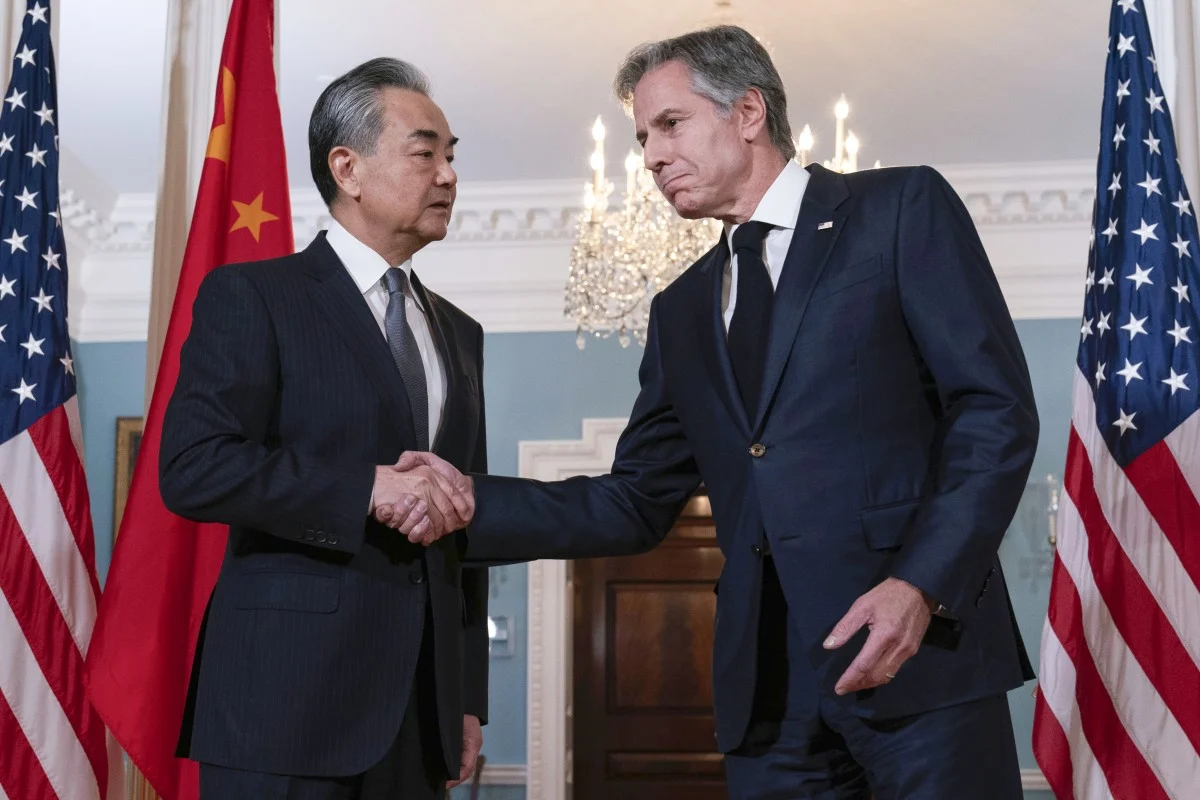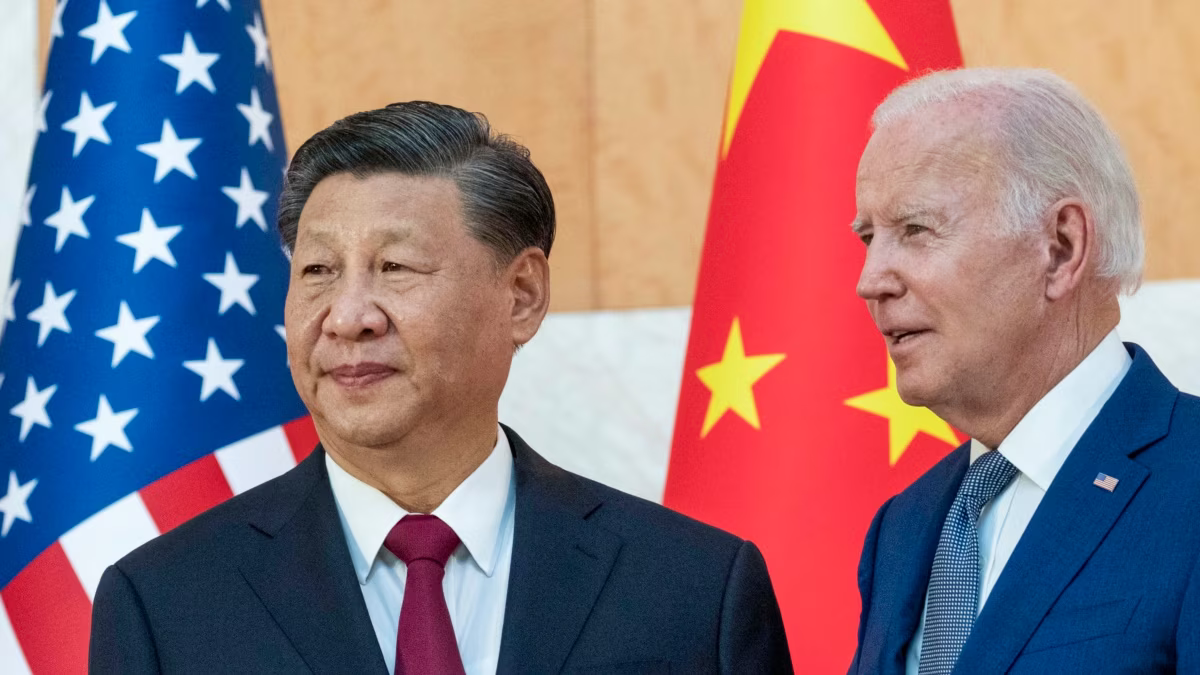Conflict
Shifting Sands: The Impact of the Israel-Hamas Conflict on Arab Perspectives

Introduction
The ongoing conflict between Israel and Hamas in Gaza has far-reaching implications that extend beyond the immediate region. This article delves into how this conflict is reshaping Arab views, impacting support for America, the two-state solution, Iran, and violent resistance.

1: The Erosion of Support for America
The Israel-Hamas conflict has led to a decline in support for America among Arab nations. The perception of the United States as a neutral mediator in the region has been challenged, with many viewing its stance as biased towards Israel. This shift in sentiment has implications for American foreign policy and its influence in the Middle East.
2: The Decline of the Two-State Solution
As the conflict persists, support for the two-state solution has waned among Arab populations. The failure to achieve a lasting peace agreement has fueled scepticism about the feasibility of this long-standing proposal. Alternative solutions are being considered as hope diminishes for a resolution based on two separate states.
3: The Rise of Iran’s Influence
Iran’s support for Hamas and other militant groups has garnered increased favour among some Arab nations. As Iran positions itself as a champion of Palestinian rights and resistance against Israel, its influence in the region is on the rise. This shift has geopolitical implications and is altering alliances in the Middle East.
4: The Growing Acceptance of Violent Resistance
The Israel-Hamas conflict has contributed to a growing acceptance of violent resistance as a legitimate means of opposing Israeli occupation. This shift in attitude reflects frustration with diplomatic efforts and a belief that armed struggle may be necessary to achieve Palestinian goals. The normalization of violent resistance poses challenges for peace efforts in the region.
Conclusion
The Israel-Hamas conflict is not just a localized struggle but a catalyst for broader changes in Arab perspectives. Support for America and the two-state solution is declining, while Iran’s influence and acceptance of violent resistance are on the rise. Understanding these shifts is crucial for navigating the complex dynamics of the Middle East and working towards sustainable peace.
Discover more from The Monitor
Subscribe to get the latest posts sent to your email.
China
China’s Diplomatic Intervention in the Israel-Gaza War: A Call for Impartiality

The recent Israel-Gaza war has caused widespread turmoil and devastation in the region. As the world struggles to come to terms with the aftermath of the conflict, China’s top diplomat, Wang Yi, has called on major countries to be fair and impartial in their approach to resolving the crisis.
Wang Yi’s comments come at a time when tensions between Israel and Palestine are at an all-time high, with both sides accusing the other of instigating the conflict. The situation has been further exacerbated by the involvement of other countries, including the US, which has been accused of taking sides in the dispute.
In his statement, Wang Yi called on major countries to “uphold justice and fairness, and push for an early end to the violence and conflict.” He also stressed the need for a “comprehensive, just, and lasting solution” to the crisis, which would involve addressing the underlying issues that have led to the conflict.
Wang Yi’s comments have been welcomed by many in the international community who see them as a positive step towards resolving the crisis. However, there are also those who remain sceptical about China’s role in the conflict, given its historical support for Palestine and criticism of Israel’s actions.
Despite these concerns, it is clear that Wang Yi’s call for fairness and impartiality is a crucial one, particularly in a conflict where emotions are running high and tensions are at their peak. If major countries can come together to support a peaceful resolution to the crisis, it could provide a much-needed ray of hope for the people of Israel and Palestine, and help to prevent further bloodshed and suffering.
In conclusion, the Israel-Gaza war is a complex and difficult issue that requires a nuanced and comprehensive approach. China’s call for fairness and impartiality is an important step in the right direction, and it is now up to major countries to work together to find a solution that is just, lasting and ultimately serves the best interests of all those involved.
Discover more from The Monitor
Subscribe to get the latest posts sent to your email.
China
Western Moves to Contain China’s Rise and The New Global Order!

Table of Contents
I. Introduction
Many Western countries are actively working to limit China’s rise to power on the global stage. Their approach involves utilizing international law and norms to create a narrative that portrays China as a potential threat to the current world order. This strategy aims to curb China’s influence and prevent it from becoming a dominant force in the international community. By constructing this narrative, Western countries hope to gain support from other nations and strengthen their positions in the global arena. However, this approach may also lead to increased tensions and conflict between China and the West.
II. Western Countries’ Efforts to Contain China’s Rise
A. Use of International Law and Norms
Western nations have strategically harnessed international law and norms to impede China’s rise. This involves leveraging their diplomatic and economic influence to mould a narrative that portrays China as a disruptor of the established global equilibrium.
B. Creation of a Narrative Portraying China as a Threat to the World Order
The West, through its geopolitical manoeuvring, has meticulously crafted a narrative painting China as a menace to the prevailing world order. This narrative, however, raises questions about its veracity, as it seems detached from objective facts and is utilized to rationalize Western aggression against China.
C. Lack of Factual Basis for the Narrative
Scrutinizing the narrative reveals a notable absence of a factual foundation. The depiction of China as a global threat appears to be a strategic fabrication, a tool wielded to legitimize Western actions against China and rally international support.
D. Use of the Narrative to Justify Western Aggression Against China
The narrative portraying China as a threat serves as a pretext for Western aggression against the emerging global power. This aggressive stance, built on a shaky foundation, not only distorts the reality of China’s peaceful rise but also contributes to an increasingly precarious global situation.
” Western strategies to thwart China’s rise, exposing the fabricated narrative and exploring China’s visionary response to forge a fairer world order
III. China’s Response to These Challenges
A. Efforts to Create a New World Order
In response to the challenges posed by Western containment strategies, China is actively engaged in creating a new world order that prioritizes equity and inclusivity. This involves a departure from the traditional power dynamics and a quest for a more balanced and fair global system.
B. Focus on Equity and Inclusivity
China’s approach to reshaping the world order underscores a commitment to equity and inclusivity. By advocating for a fair and just global environment, China aims to foster cooperation, mutual respect, and understanding among nations.
IV. Conclusion
A. Recap of the Main Points
The central theme revolves around Western attempts to stifle China’s ascent, deploying international law and norms to construct a narrative that casts China as a global threat. tIt also analyses China’s response, emphasizing its pursuit of a new world order marked by equity and inclusivity.
B. Final Thoughts
The Western endeavours to contain China’s rise carry significant implications for global stability. Recognizing China’s ascendancy and engaging in collaborative efforts to construct a more equitable and just world order is not only prudent but essential for fostering a harmonious and cooperative international community. As we navigate these complex geopolitical waters, the imperative is to move beyond adversarial narratives and embrace a shared vision for a better future.
Discover more from The Monitor
Subscribe to get the latest posts sent to your email.
China
The ‘Live and Let Live’ Era is Over: China and the US Are on a Collision Course

Introduction
The notion of ‘live and let live’ has long been touted as a potential cornerstone for a stable and cooperative relationship between China and the United States, the world’s two largest economies. However, recent developments paint a rather grim picture, suggesting that this once-envisioned approach may be teetering on the brink of collapse.
A Brief History of ‘Live and Let Live’
The concept of ‘live and let live’ gained prominence during the Cold War era, when the US and the Soviet Union, the two dominant superpowers, sought to avoid direct confrontation while maintaining their respective spheres of influence. This approach, characterized by a degree of tolerance and accommodation, helped prevent global catastrophe.
In the context of China-US relations, ‘live and let live’ has been interpreted as a tacit agreement to coexist peacefully, acknowledging each other’s interests and refraining from interference in domestic affairs. This approach has been credited with fostering economic interdependence and preventing major conflicts.

The Erosion of ‘Live and Let Live’
Despite its potential benefits, the ‘live and let live’ approach between China and the US is facing increasing challenges. Several factors have contributed to this erosion, including:
- Ideological Differences: The fundamental ideological differences between the two countries, with China’s authoritarian system contrasting sharply with the US’s democratic values, have created a persistent source of tension.
- Economic Rivalry: The rapid rise of China’s economy has transformed the global landscape, leading to concerns about its economic dominance and potential threat to US interests.
- Geopolitical Competition: The expanding geopolitical influence of China, particularly in the Asia-Pacific region, has heightened US anxieties about its strategic ambitions.
- Technological Advancement: China’s rapid technological advancements, particularly in areas like artificial intelligence and 5G, have raised concerns about potential US vulnerabilities.
The Impact of Recent Developments
Recent developments have further strained the relationship between China and the US, making the ‘live and let live’ approach increasingly difficult to sustain:
- Trade War: The ongoing trade war between the two countries has imposed significant economic costs and raised concerns about a broader decoupling of their economies.
- Technology Crackdown: The US’s crackdown on Chinese technology companies, such as Huawei and TikTok, has intensified technological rivalry and raised concerns about protectionism.
- Taiwan Tensions: The heightened tensions surrounding Taiwan, with China’s increasing military assertiveness, have raised fears of a potential conflict.
- South China Sea Disputes: The ongoing territorial disputes in the South China Sea have remained a flashpoint for potential conflict.
The Path Forward
Amidst these challenges, the future of ‘live and let live’ between China and the US remains uncertain. Both countries face a difficult decision: to continue pursuing a cooperative approach or embrace a more confrontational stance.
A return to the ‘live and let live’ approach would require a significant shift in both countries’ attitudes and policies. It would demand a willingness to compromise, acknowledge each other’s interests, and refrain from provocative actions.
However, the path forward is fraught with challenges. The deeply entrenched ideological differences, economic rivalry, and geopolitical competition make it difficult to envision a return to the status quo.
Conclusion
The ‘live and let live’ approach between China and the US has served as a crucial stabilizing force in international relations. However, recent developments suggest that this approach is facing an existential crisis. Both countries must carefully consider the consequences of their actions and make a concerted effort to avert a downward spiral that could have devastating global consequences. Embracing a more cooperative approach, while acknowledging and addressing underlying differences, remains the only viable path forward for ensuring a stable and prosperous future for both nations.
Discover more from The Monitor
Subscribe to get the latest posts sent to your email.
-

 Featured5 years ago
Featured5 years agoThe Right-Wing Politics in United States & The Capitol Hill Mayhem
-

 News4 years ago
News4 years agoPrioritizing health & education most effective way to improve socio-economic status: President
-

 China5 years ago
China5 years agoCoronavirus Pandemic and Global Response
-

 Canada5 years ago
Canada5 years agoSocio-Economic Implications of Canadian Border Closure With U.S
-

 Conflict5 years ago
Conflict5 years agoKashmir Lockdown, UNGA & Thereafter
-

 Democracy4 years ago
Democracy4 years agoMissing You! SPSC
-

 Democracy4 years ago
Democracy4 years agoPresident Dr Arif Alvi Confers Civil Awards on Independence Day
-

 Digital5 years ago
Digital5 years agoPakistan Moves Closer to Train One Million Youth with Digital Skills




















